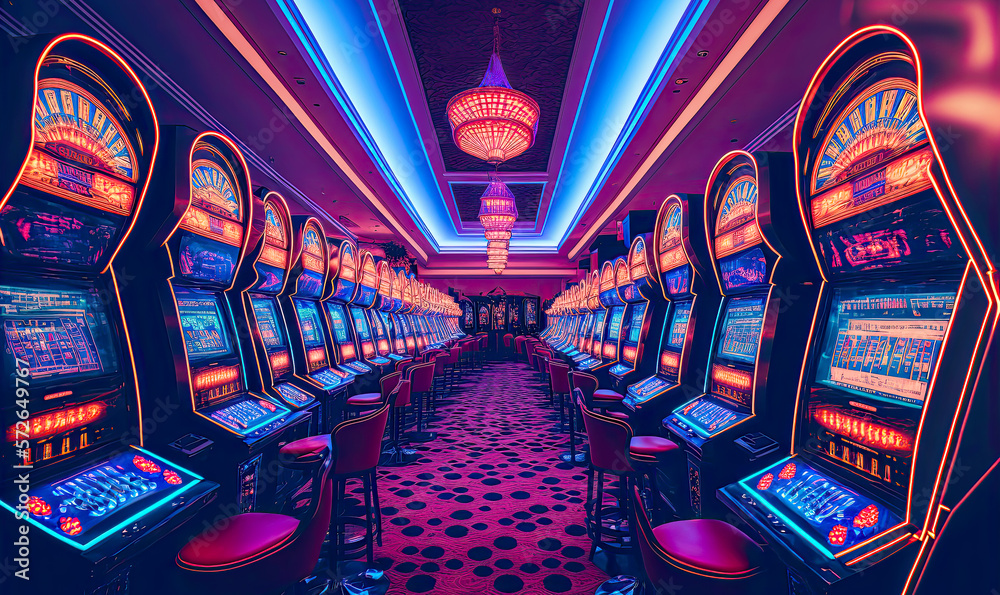
Within the dynamic and thrilling world of casinos, where luck and strategy intertwine, color and design play a critical role in attracting gamblers. As soon as visitors step inside a casino or log into a gaming platform, they are enveloped in a sightly feast that grabs their attention and entices them to explore further. Vivid colors, engaging graphics, and innovative layouts are meticulously crafted to create an atmosphere of excitement and anticipation, ultimately improving the gaming experience.
While gamblers move through the dynamic landscape of casino games, they come across a variety of designs that not only serve aesthetic purposes but also influence feelings and decision-making. Colors like red and yellow symbolize wealth and fortune, while calm navy and emeralds can create a much relaxed environment. Understanding how these elements function together allows casinos to create an inviting and stimulating atmosphere that encourages players to engage with the games, invest additional time at the tables, and increase their overall enjoyment.
The Study of Color in Gambling Games
Color plays a key role in the design of gambling games, affecting player emotions and behaviors. Bright and vibrant shades, such as scarlet and gold, are often used to stimulate thrill and draw notice. These shades create a sense urgency and dynamism, encouraging participants to involve themselves more eagerly with the activity. By thoughtfully selecting tints, designers aim to evoke emotions of joy and expectation, which can enhance the complete game experience.
Various shades also have psychological associations that can impact how participants perceive their odds of winning. For case, emerald is commonly associated with good fortune and abundance, making it a well-liked choice in activities like the roulette wheel and poker games. This association can lead players to feel more positive and assured in their gameplay, ultimately inspiring them to wager more. Understanding these associations allows game developers to design environments that enhance player enjoyment and retention.
Moreover, the layout of gambling game interfaces often uses blended colors and differing hues to direct players’ actions. PG88 For example, winning outcomes may be highlighted with vivid, contrasting shades, creating a visual reward. This technique strengthens favorable outcomes and encourages repeated participation. By utilizing the psychology of color, gaming venues can develop games that not only attract participants but also hold them engaged and invested in their play experience.
Design Elements that Attract Gamers
The visual appeal of casino games is largely influenced by the use of vibrant colors. Bright and contrasting colors are deliberately chosen to create an inviting atmosphere that grabs interest. For instance, reds and golden hues often signify good fortune and wealth, which is why they are prevalent in the palettes of gaming machines and table surfaces. These colors not only attract players in, but they also evoke emotions related to thrill and anticipation, enhancing the total gaming experience.
In addition to color, the design and layout of casino games play a crucial role in captivating players. Games are designed to be user-friendly, ensuring that players can easily understand the guidelines and mechanics. Accessible interfaces, along with engaging graphics and motion, help maintain gamer interest and encourage extended play sessions. The tactile elements, such as the texture of the controls and the sounds of the games, also contribute to a comprehensive sensory experience that keeps players engaged.
In conclusion, conceptual elements in gaming design can greatly influence gaming decisions. Many casino games are inspired by media, fairy tales, or adventure themes, featuring symbols and characters that connect with players. These themes create a sense of engagement and connection, making each game feel unique. When players feel a connection to the concept, they are more likely to choose that game over others, leading to increased participation and excitement within the casino environment.
Case Studies: Effective Gambling Table Game Designs
One key example of effective gambling game design is the well-known slot machine series based around popular movies. Games such as those based on the The Wizard of Oz and Game of thrones utilize dynamic colors and high-quality graphics to enthrall players in recognizable narratives. The application of dynamic visuals and engaging sound effects takes the interest of players, creating an psychological connection to the theme. Bắn cá PG88 This approach not just encourages longer play but also boosts the overall gaming experience, resulting in increased player retention.
Another notable case is the application of color psychology in table games like 21 and the wheel. Casinos often create these games with dark reds and greens, colors traditionally associated with luck and wealth. For instance, the green felt on a blackjack table provides a relaxing effect, while the crimson accents in roulette invite thrill. This deliberate use of color helps to create an inviting atmosphere that motivates players to participate, addressing their psychological impulses and boosting their enjoyment.
Finally, online casino games that include community features and lively, dynamic designs have achieved remarkable success in engaging players. Games like Zynga Poker and Slot-O-Mania leverage striking colors and playful animations to establish an inviting online environment. The inclusion of leaderboards, social sharing options, and in-app rewards encourages competition and community, drawing players in for longer sessions. Such designs not just make the games visually appealing but also highlight social interaction, a vital factor in player retention and engagement within digital casino environments.